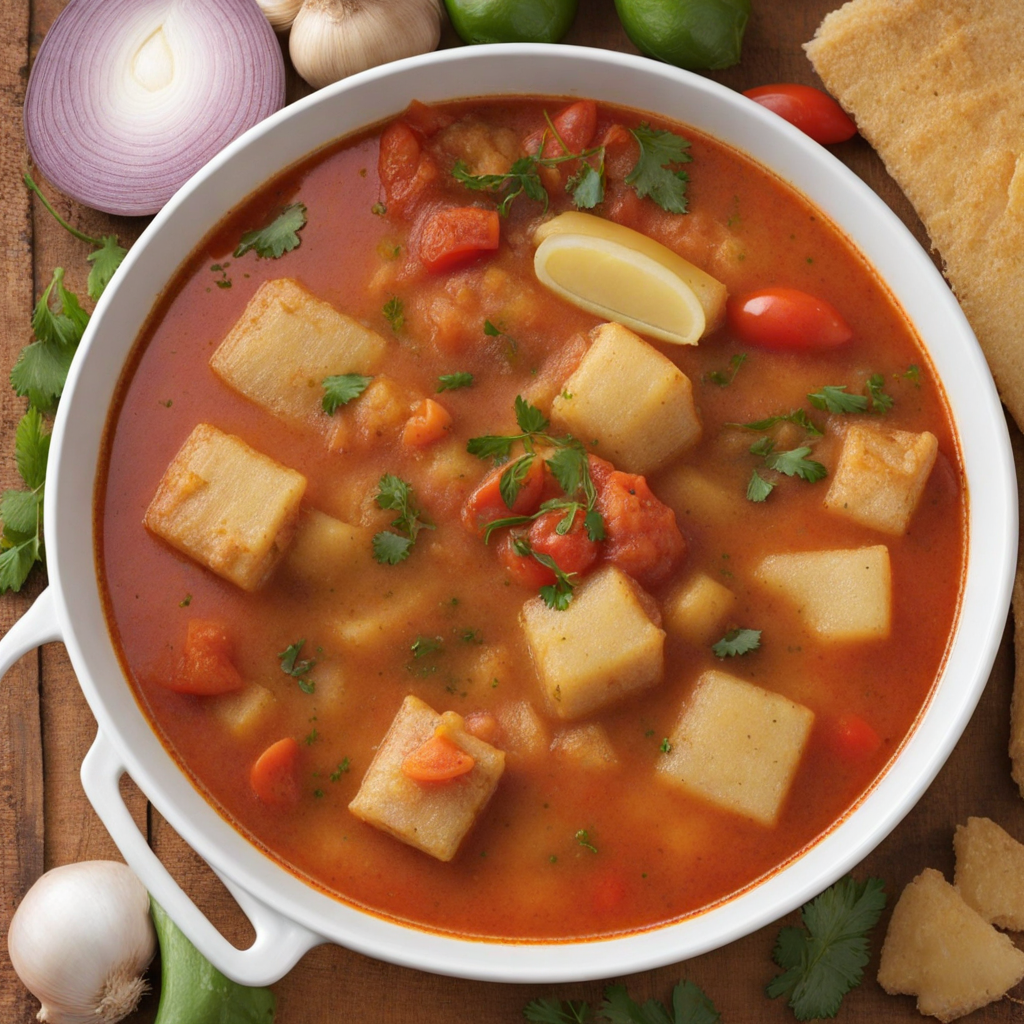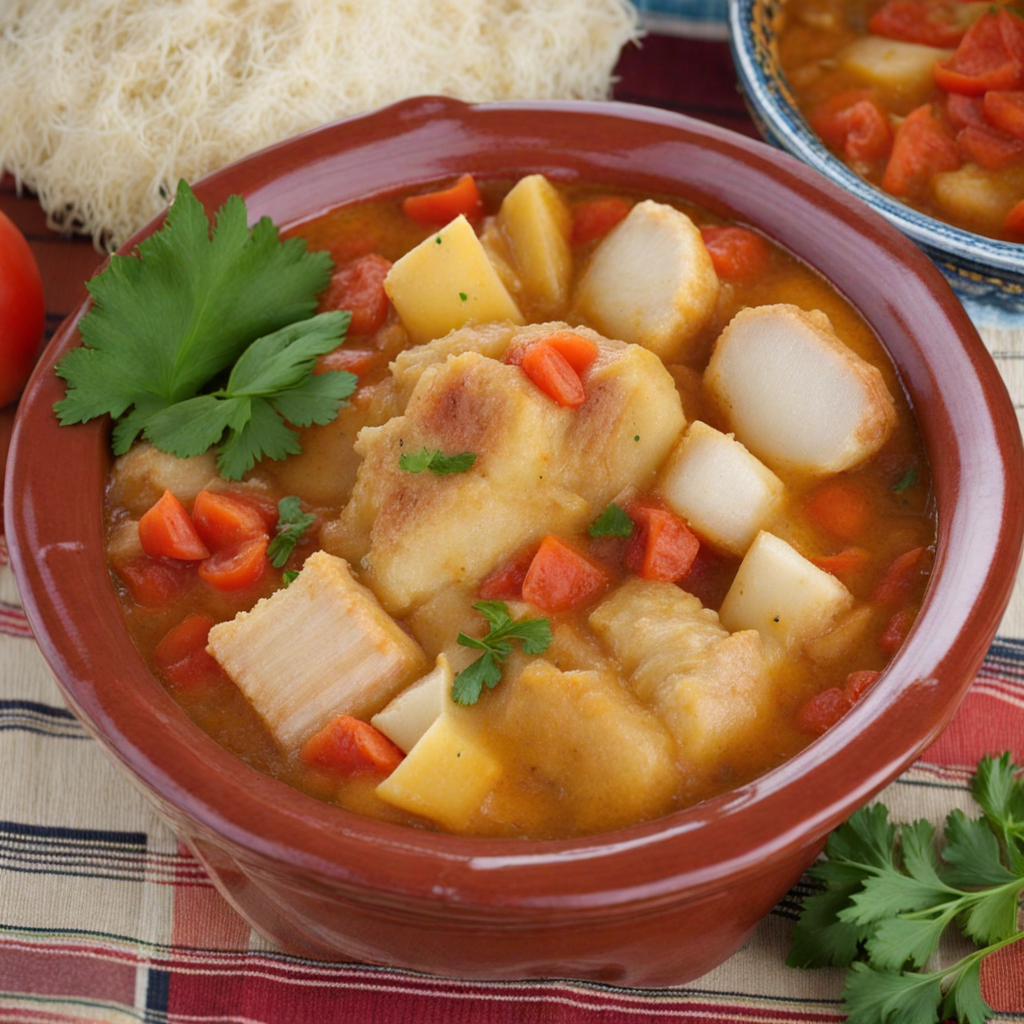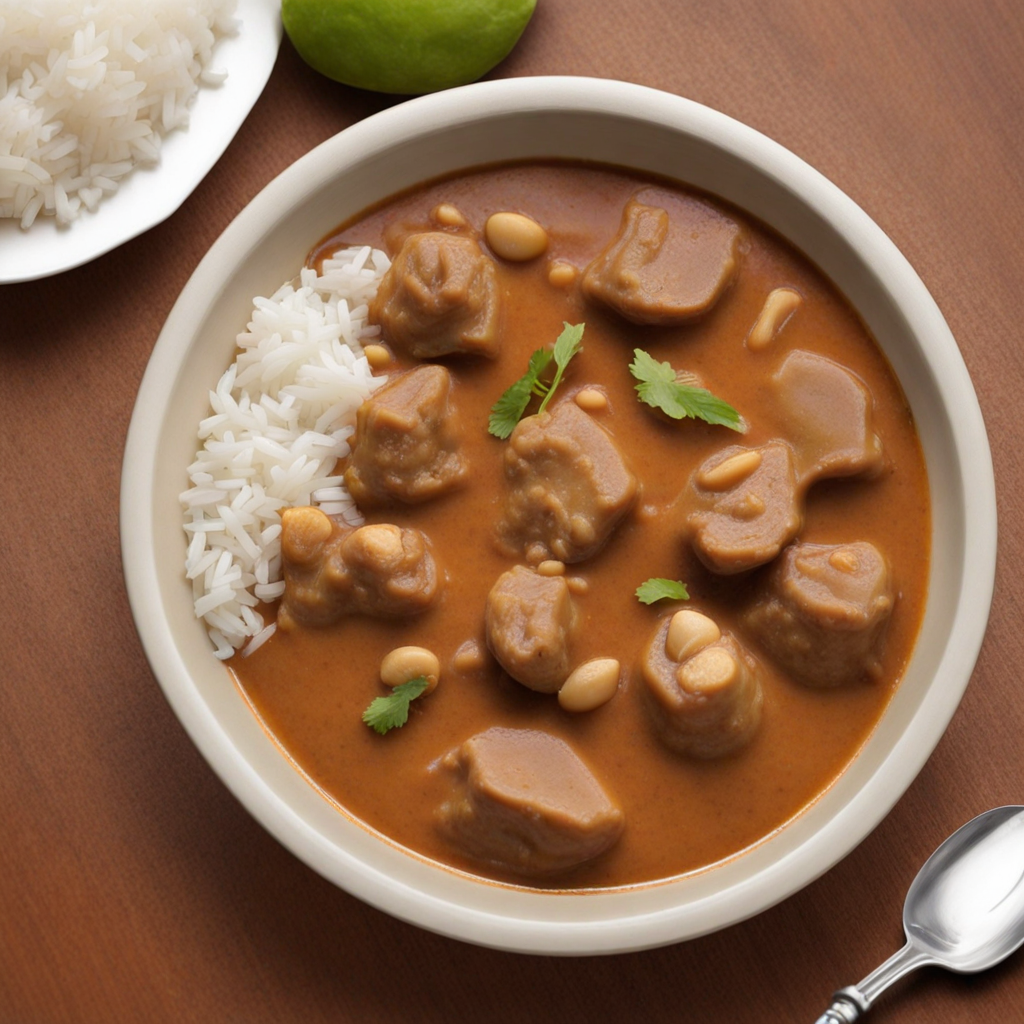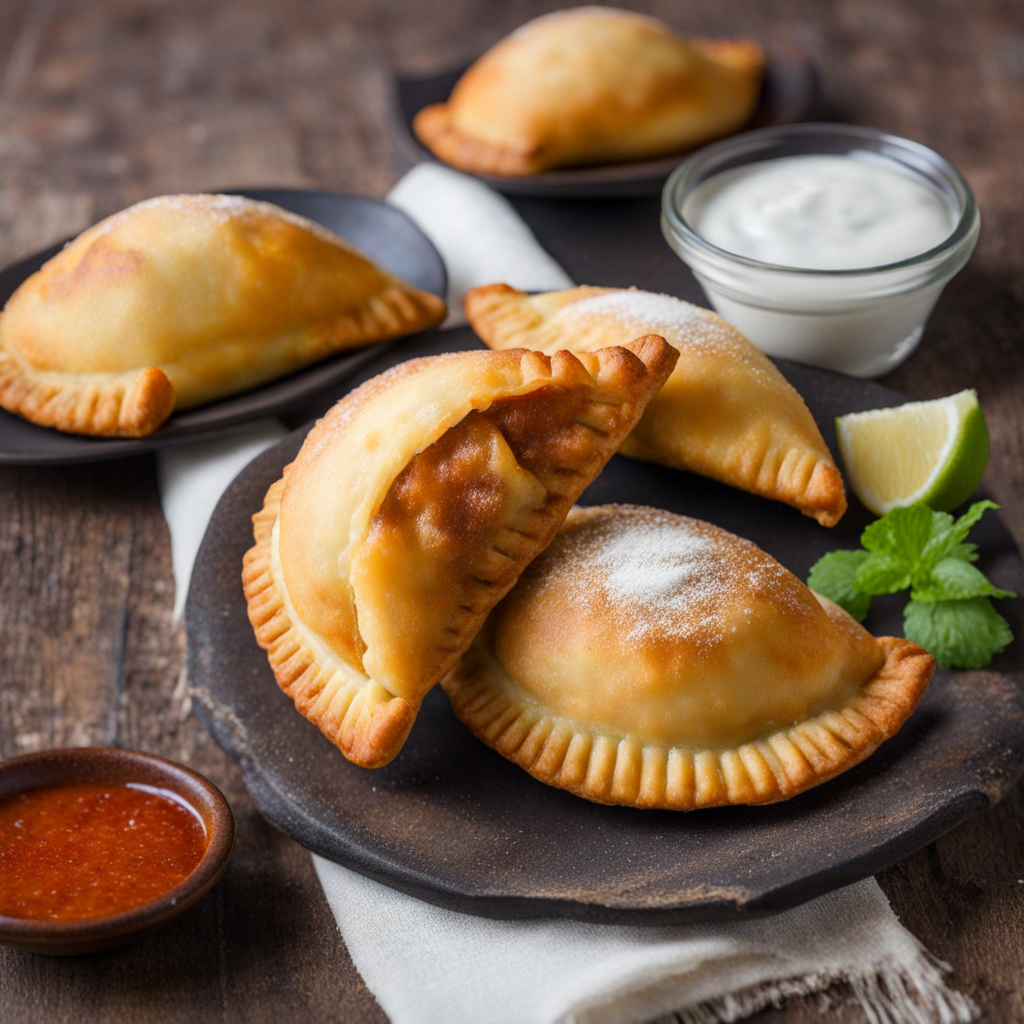Encebollado
Encebollado is a traditional Ecuadorian dish that tantalizes the taste buds with its rich flavors and comforting textures. At its core, the dish is a hearty fish stew, typically made with albacore tuna, which is simmered to perfection alongside yuca (cassava) and a medley of aromatic spices. The fish is tender and flaky, while the yuca adds a delightful starchy element that absorbs the savory broth, creating a harmonious blend of tastes and textures. The broth itself is often enhanced with ingredients like cilantro, garlic, and tomatoes, giving it a vibrant color and a depth of flavor that is simply irresistible. What sets Encebollado apart is its signature topping of pickled red onions, which provides a refreshing crunch and a tangy contrast to the warm stew. This bright addition is typically marinated in lime juice, allowing the onions to soften slightly while retaining their crispness. The combination of the rich, savory stew with the sharp acidity of the onions creates a balanced and satisfying dish that is perfect for any time of day, though it is commonly enjoyed as a breakfast staple in Ecuador. To elevate the experience further, Encebollado is often served with sides such as avocado slices, fresh lime wedges, and a variety of hot sauces, allowing diners to customize the dish to their personal preference. The warming and robust flavors make it not only a delicious meal but also a comforting embrace on a chilly day. Whether enjoyed in a local eatery or prepared at home, Encebollado is a celebration of Ecuadorian culinary heritage that invites food lovers to explore its delightful and unique taste.
How It Became This Dish
Encebollado: A Culinary Journey Through Ecuador's Flavorful Heritage Encebollado, a traditional Ecuadorian dish, is more than just a meal; it is a cultural emblem that reflects the country’s diverse culinary influences and rich history. This flavorful fish soup is characterized by its tender pieces of fresh fish, often albacore tuna, bathed in a savory broth infused with yuca (cassava), onions, and a vibrant array of spices. Often served with a side of pickled onions and sometimes accompanied by avocado or plantains, encebollado is a beloved comfort food that resonates deeply with Ecuadorians and visitors alike. Origins of Encebollado The history of encebollado can be traced back to the coastal regions of Ecuador, particularly in cities like Guayaquil, where it is a staple. The dish's name derives from the Spanish word "cebolla," meaning onion, emphasizing the importance of this ingredient in the recipe. The origins of encebollado are intertwined with the broader history of Ecuador's fishing communities and their culinary practices. Ecuador's coastal waters are abundant with various fish species, which have been harvested by local communities for centuries. Indigenous peoples, such as the Manteños and the Huancavilcas, were among the first to utilize the ocean's bounty, developing techniques to catch and prepare fish. The incorporation of yuca, a root vegetable native to South America, speaks to the agricultural practices that flourished in conjunction with fishing. When the Spanish colonizers arrived in the 16th century, they introduced new ingredients and cooking methods that further shaped the local cuisine. Cultural Significance Encebollado holds a special place in Ecuadorian culture. It is often considered a hangover cure, consumed by revelers after a night of celebration, particularly during festivities in coastal cities. The dish is frequently enjoyed for breakfast or lunch, highlighting its versatility and the role it plays in daily life. Beyond its culinary appeal, encebollado serves as a social connector. It is commonly shared among families and friends, symbolizing warmth and hospitality. In Guayaquil, where the dish is particularly popular, street vendors and restaurants alike serve it, creating a lively culture around its consumption. The preparation and enjoyment of encebollado often become communal activities, where stories are shared, and community bonds are strengthened. Evolution Over Time As Ecuadorian society evolved, so too did the recipe and consumption of encebollado. In the early 20th century, as urbanization increased and migration patterns changed, encebollado became more widespread beyond the coastal regions. The dish adapted to include local variations, incorporating different types of fish and additional ingredients based on regional availability. The rise of tourism in Ecuador has also played a significant role in the evolution of encebollado. As travelers from around the world flock to the country to experience its natural wonders and vibrant culture, they have discovered and embraced local foods. This increased interest has led to culinary innovation, as chefs and home cooks experiment with new flavors and presentations while still honoring traditional methods. In recent years, the globalization of cuisine has further influenced encebollado. Chefs have begun to incorporate international techniques and ingredients, enhancing the dish while maintaining its essence. Some variations may include the addition of coconut milk or different spices inspired by global culinary movements, reflecting a fusion of flavors that caters to diverse palates. Ingredients and Preparation The traditional preparation of encebollado emphasizes fresh, high-quality ingredients. The primary component, fresh fish, is typically albacore tuna, though other types such as tilapia or marlin can also be used. The fish is cooked in a rich broth made from water, yuca, and a mix of spices, including cumin, garlic, and pepper. The yuca not only adds texture but also thickens the soup, creating a hearty consistency. Onions play a crucial role in the dish, both in the broth and as a garnish. They are often sliced thinly and marinated in lime juice and salt, creating a zesty accompaniment that balances the dish's richness. This pickled onion topping is nearly as essential as the soup itself, bringing brightness and acidity to each spoonful. The final touch often includes a squeeze of lime and a sprinkle of fresh cilantro, enhancing the dish's flavor profile. It is commonly served with a side of fried plantains or avocado, adding additional layers of taste and texture. Modern-Day Popularity Today, encebollado continues to thrive as a cherished part of Ecuadorian identity. It is not uncommon to find families passing down recipes through generations, ensuring that the tradition of preparing and enjoying this dish remains alive. As Ecuadorians living abroad seek to recreate the flavors of their homeland, encebollado has also made its way to international menus, offering a taste of Ecuadorian culture to a global audience. Social media has played a pivotal role in the contemporary appreciation of encebollado. Food bloggers and influencers showcase the dish, encouraging culinary exploration and inspiring new generations to take pride in their culinary heritage. Cooking classes and food tours in Ecuador often feature encebollado, allowing visitors to engage directly with the local food culture. Conclusion Encebollado is more than just a traditional dish; it is a vibrant representation of Ecuador's coastal culture, history, and community. Its evolution over time reflects the adaptability of Ecuadorian cuisine, embracing both tradition and innovation. As Ecuadorians continue to celebrate this beloved soup, it remains a symbol of home, connection, and the profound joy that comes from sharing food with loved ones. Whether enjoyed on the bustling streets of Guayaquil or in the comfort of a family kitchen, encebollado is a testament to the enduring power of food to unite and nourish, transcending borders and generations.
You may like
Discover local flavors from Ecuador







